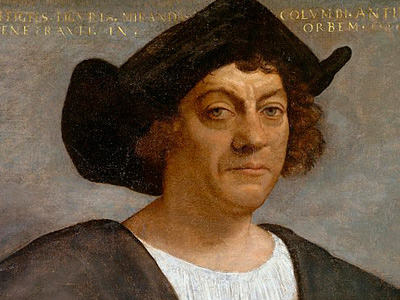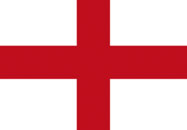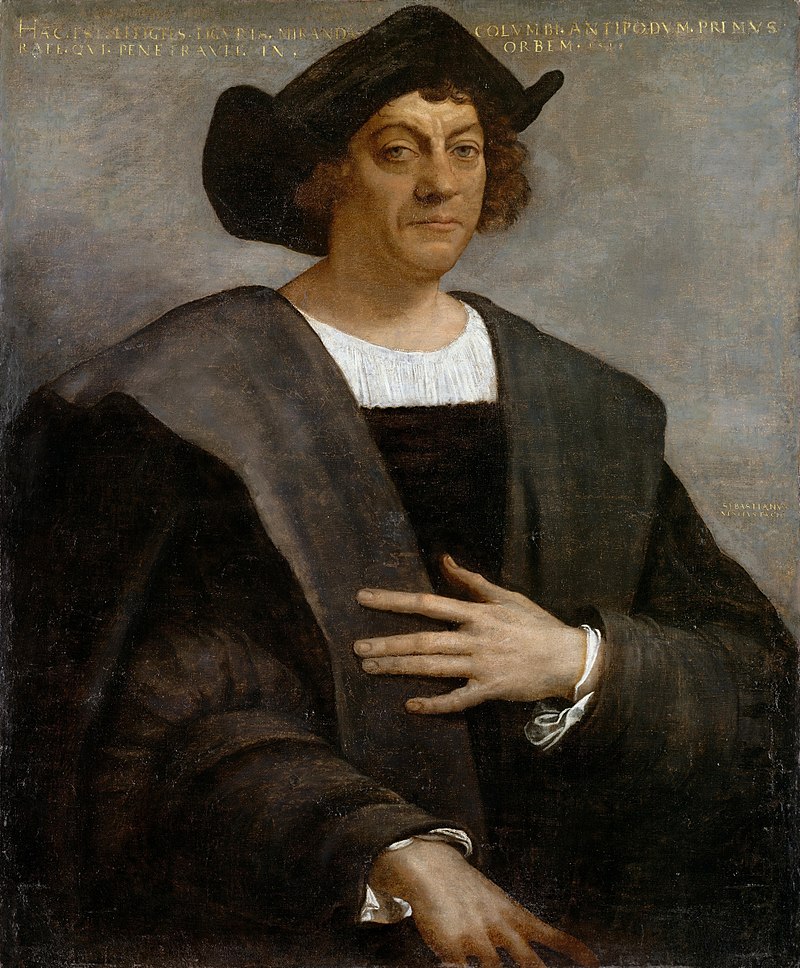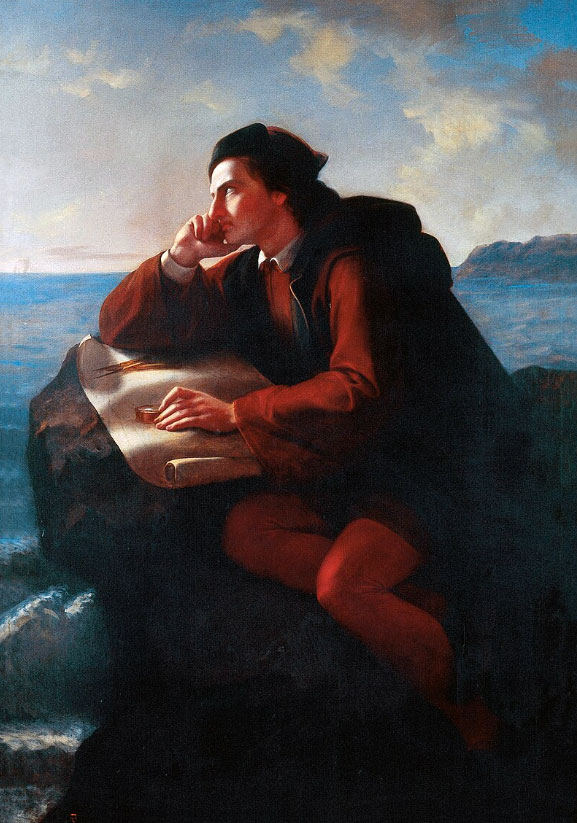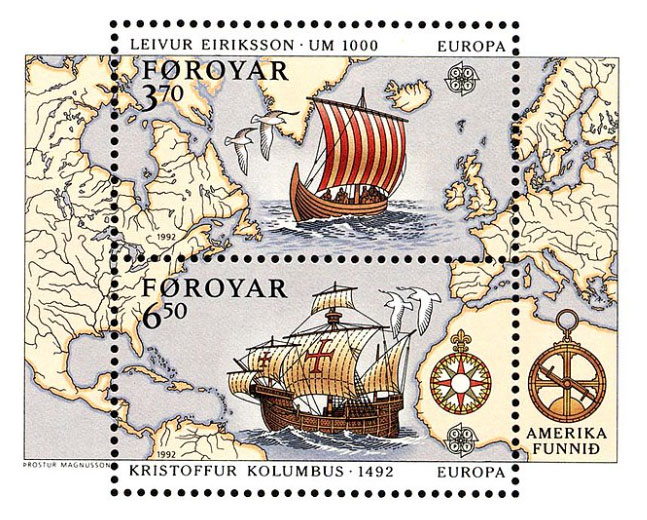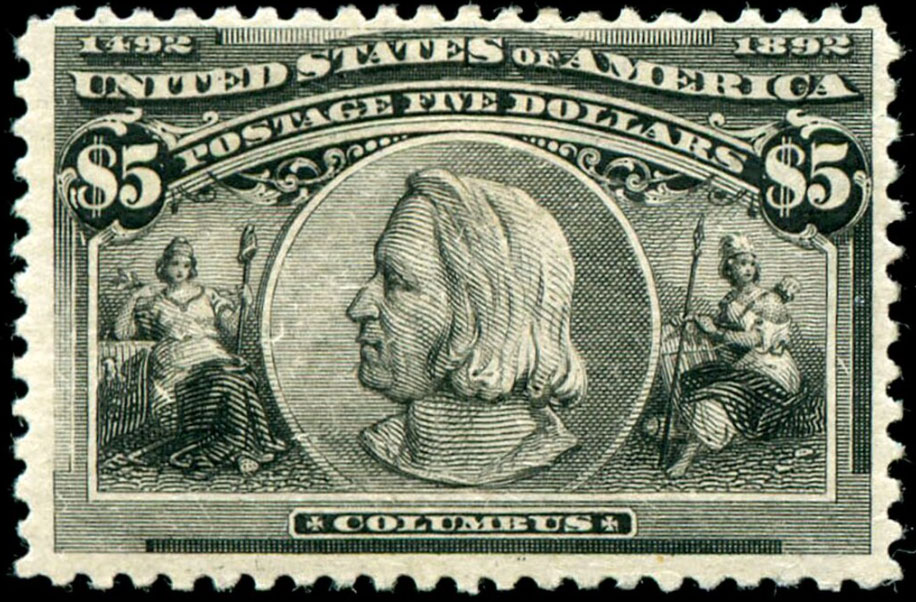Christopher Columbus (1451-1506)
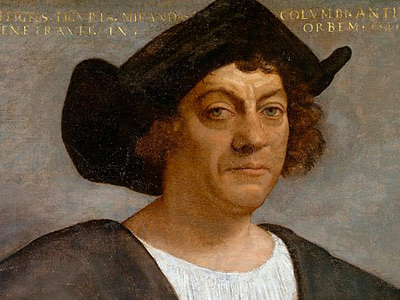
Fourth Voyage
Before leaving for his fourth voyage, Columbus wrote a letter to the Governors of the Bank of Saint George, Genoa, dated at Seville, 2 April 1502. He wrote "Although my body is here my heart is always near you."
Columbus made a fourth voyage nominally in search of the Strait of Malacca to the Indian Ocean. Accompanied by his brother Bartolomeo and his 13-year-old son Fernando, he left Cádiz on 11 May 1502, with his flagship Santa María and the vessels Gallega, Vizcaína, and Santiago de Palos. He sailed to Arzila on the Moroccan coast to rescue Portuguese soldiers whom he had heard were under siege by the Moors.
On 15 June, they landed at Carbet on the island of Martinique (Martinica). A hurricane was brewing, so he continued on, hoping to find shelter on Hispaniola. He arrived at Santo Domingo on 29 June, but was denied port, and the new governor refused to listen to his storm prediction. Instead, while Columbus's ships sheltered at the mouth of the Rio Jaina, the first Spanish treasure fleet sailed into the hurricane. Columbus's ships survived with only minor damage, while 29 of the 30 ships in the governor's fleet were lost to a storm on 1 July. In addition to the ships, 500 lives (including that of the governor, Francisco de Bobadilla) and an immense cargo of gold were surrendered to the sea.
After a brief stop at Jamaica, Columbus sailed to Central America, arriving at Guanaja (Isla de Pinos) in the Bay Islands off the coast of Honduras on 30 July. Here Bartolomeo found native merchants and a large canoe, which was described as being "long as a galley" and filled with cargo. On 14 August, he landed on the continental mainland at Puerto Castilla, near Trujillo, Honduras. He spent two months exploring the coasts of Honduras, Nicaragua, and Costa Rica, before arriving in Almirante Bay in Panama on 16 October.
On 5 December 1502, Columbus and his crew found themselves in a storm unlike any they had ever experienced. In his journal Columbus writes,
"For nine days I was as one lost, without hope of life. Eyes never beheld the sea so angry, so high, so covered with foam. The wind not only prevented our progress, but offered no opportunity to run behind any headland for shelter; hence we were forced to keep out in this bloody ocean, seething like a pot on a hot fire. Never did the sky look more terrible; for one whole day and night it blazed like a furnace, and the lightning broke with such violence that each time I wondered if it had carried off my spars and sails; the flashes came with such fury and frightfulness that we all thought that the ship would be blasted. All this time the water never ceased to fall from the sky; I do not say it rained, for it was like another deluge. The men were so worn out that they longed for death to end their dreadful suffering"
In Panama, Columbus learned from the Ngobe of gold and a strait to another ocean, but was told by local leader Quibían not to go past a certain point down the river. After much exploration, in January 1503, he established a garrison at the mouth of the Belén River. On 6 April, one of the ships became stranded in the river. At the same time, the garrison was attacked by Quibían and the other ships were damaged. Shipworms also damaged the ships in tropical waters.
Columbus left for Hispaniola on 16 April heading north. On 10 May he sighted the Cayman Islands, naming them "Las Tortugas" after the numerous sea turtles there. His ships next sustained more damage in a storm off the coast of Cuba. Unable to travel farther, on 25 June 1503 they were beached in St. Ann's Bay, Jamaica.
For one year Columbus and his men remained stranded on Jamaica. A Spaniard, Diego Méndez, and some natives paddled a canoe to get help from Hispaniola. The governor, Nicolás de Ovando y Cáceres, detested Columbus and obstructed all efforts to rescue him and his men. In the meantime Columbus, in a desperate effort to induce the natives to continue provisioning him and his hungry men, won their favor by predicting a lunar eclipse for 29 February 1504, using Abraham Zacuto's astronomical charts. Help finally arrived, no thanks to the governor, on 29 June 1504, and Columbus and his men arrived in Sanlúcar, Spain, on 7 November.
HISTORY
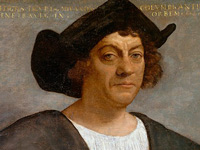
RESOURCES
This article uses material from the Wikipedia article "Christopher Columbus (1451-1506)", which is released under the Creative Commons Attribution-Share-Alike License 3.0.
© Stories Preschool. All Rights Reserved.
